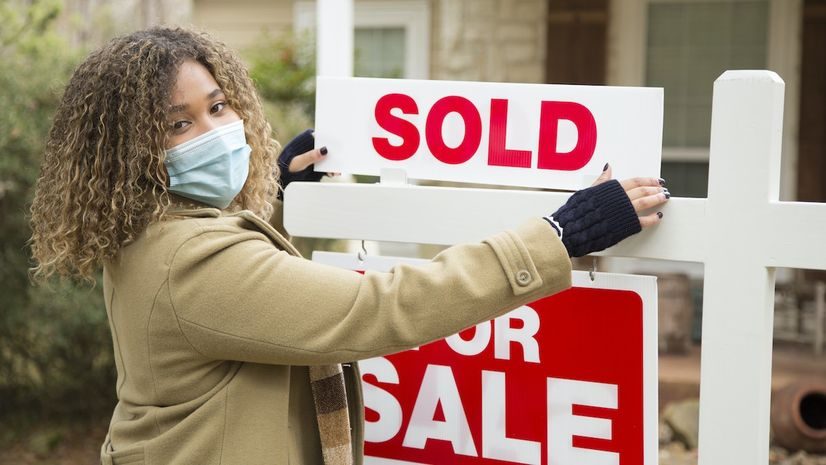Real estate trends are always in flux. Here’s what you need to know about the latest happenings.
The housing market has been gaining strength in the last few years — particularly during the COVID-19 pandemic. Home values soared, buyer demand jumped, and mortgage rates hit historic lows. And ultimately, it’s made housing one of the few bright spots during an otherwise difficult time.
But the housing market is always in flux, and real estate trends come and go. Throw in that this industry is highly localized, with different conditions in every city, state, and metro area, and you can’t bet on things staying stagnant for long.
Fortunately, understanding the fundamentals of the market can help you stay on top of all these changes. Check out some of those fundamentals below, and scroll down for the most up-to-date real estate trends of the month.
Real estate prices
House prices are influenced by a number of factors, including local buyer demand and the amount of housing supply that’s available for purchase. Generally speaking, high demand and low supply cause housing prices to rise.
Mortgage rates can also play a role since they impact demand. When rates are lower, there tends to be more interest in buying homes. When rates rise, demand might wane a bit.
At the national level, home prices have been rising for some time. As of the end of 2020, the median home price was just under $347,000. Home prices jumped 11% across 2020 alone.
Housing affordability
Affordability isn’t just a result of house prices. Incomes, inflation, and interest rates also play a role. So rising prices? They don’t always mean homes are getting less affordable. If rates are particularly low or incomes are increasing, homebuyers might actually be able to afford more house than they could have previously.
Fortunately, that’s exactly the scenario we’re seeing today. When factoring in rates, income trends, and inflation, consumer house-buying power was actually up 21% by the end of 2020.
Interest rates
Mortgage interest rates play a big role in the housing market, impacting demand, home prices, and affordability. They also fluctuate daily based on a whole slew of factors, including Federal Reserve policy, the bond market, investor interest in mortgage-backed securities, and, of course, inflation.
In early 2021, mortgage rates hovered around all-time lows, according to Freddie Mac. The average rate on a 30-year, fixed-rate mortgage was just 2.74% in January, up from 3.62% the year before and 4.76% a decade prior.
Housing inventory
Housing inventory — or the supply of homes that are currently available for purchase — is another important factor in the housing market, too. When inventory is low and demand is high, it creates a seller’s market. Home prices rise, bidding wars erupt, and sellers have the upper hand in negotiations.
If inventory is high, on the other hand, buyers tend to have the advantage. In a buyer’s market, there are more available listings than there are buyers to purchase them. This slows down price growth and makes the market less competitive overall.
As far as today’s inventory goes, supply has been very low in recent years, and the coronavirus pandemic only worsened things. With sellers leery about having strangers in their homes — not to mention loads of economic uncertainty — the number of for-sale listings plummeted in 2020, at one point reaching its lowest level ever recorded. Listings have since recovered slightly but still remain fairly low. It’s possible widespread vaccinations will help loosen supply constraints and get sellers back on the market, but, of course, only time will tell.
Delinquencies and foreclosures
Mortgage delinquencies and distressed properties like foreclosures and REOs are another part of the market to pay attention to, especially if you’re an investor. Both of these tend to rise in times of economic hardship. (Case in point: During the financial crisis over a decade ago, there were around 3.8 million foreclosures.)
Housing market cycles and crashes
Real estate, along with the overall economy, tends to be cyclical. There are booms and busts, and as we saw with the housing crash back in 2007-2008, some of these extremes can get pretty bad.
Fortunately, most experts don’t think we’re nearing another crisis just yet. Though the economy is in a recession, there are a few key differences in today’s housing market versus those of downturns past.
For one, property owners have record levels of equity. Between Q3 2019 and Q3 2020, homeowner equity jumped by $1 trillion, and according to recent data, a mere 3% of properties have negative equity. This equity protects borrowers in the event their homes lose value, giving them a sort of buffer if the market turns.
Lending standards are also stricter than they once were, so homeowners likely have fewer debts and better credit profiles; overall, they’re more financially equipped to handle the mortgages they’ve taken out. On top of all this, there are low interest rates to consider. The Federal Reserve has committed to keeping the federal funds rate around zero until at least 2023. This should keep mortgage rates low and housing demand high for the foreseeable future.
Now that we’ve got those housing market basics out of the way, let’s dive into some more recent trends we’ve been seeing on the ground. Here’s what’s happening in the real estate market in October 2021.
1. Rents are skyrocketing
If you’re a landlord, it’s good news all around. The eviction ban finally ended, and rents are at record highs. According to Realtor.com, they jumped by 11.5% between August 2020 and August 2021, marking the first double-digit increase on record. Rents are even more expensive than starter homes in many American cities.
The average rent for the month clocked in at $1,633, up $169 a month. Two-bedroom apartments saw the biggest jump, at 12.3% over the year. Those rents now hover just under $1,830 per month.
2. Buying activity is slowing down
It seems competition is finally starting to wane. It might be the start of school, the threat of rising mortgage rates, or maybe buyers are finally getting burned out on the market. Whatever it is, it’s seeming easier to buy a home these days.
Existing home sales are down 2% for August, the first decline in over a year, and overall sales fell 6%. What’s more? The bidding war rate is the lowest it’s been all year. Currently, just over half of all buyers face a bidding war.
3. Home prices continue on their tear
Don’t let that dwindling competition fool you. Just because some buyers are stepping back doesn’t mean homes aren’t selling. They definitely are — and often at a premium.
According to the most recent House Price Index from the Federal Housing Finance Agency, national home prices are up over 19% as of July compared to last year. Between June and July alone, they rose 1.4%.
Homes in the Mountain division of the Census — which includes Arizona, Colorado, Utah, Idaho, New Mexico, Montana, Nevada, and Wyoming — saw the biggest jump in prices. Those are up a shocking 25.6%.
4. Foreclosures are rising
The foreclosure moratorium is officially in the rearview, and lenders acted fast. According to ATTOM Data Solutions, August saw a 27% jump in foreclosure filings — and that’s just compared to July. Over the year, they rose 60%.
Foreclosure starts were highest in California, Texas, Florida, Illinois, and New York, while New York, Chicago, Los Angeles, Houston, and Dallas topped the list of metros. If you’re a house flipper on the hunt for distressed properties, these should be the first places you look.
5. Mortgages are getting easier to come by
The Mortgage Bankers Association shows the mortgage credit availability is up, with a 3.9% increase between July and August. This essentially indicates the lending standards are loosening, making it easier to get a mortgage loan.
Credit availability is up the most on jumbo loans, which typically come with some of the most stringent qualifying standards. Conventional loans also saw a notable jump.
If that weren’t enough to get investors excited, there’s one more bit of mortgage-related news that might help. A few weeks ago, the FHFA announced it was rolling back policies that limited Fannie Mae and Freddie Mac‘s purchases of investment property loans. This should result in lower rates and fees on those mortgages moving forward.
The bottom line
The housing market is always changing. Be sure to check back in November for the latest trends and happenings in real estate.
Origination: https://www.millionacres.com/real-estate-market/real-estate-trends/real-estate-trends-guide/

















